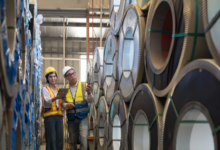Mastering Subdivision Development: From Concept to Completion

Subdivision development is a complex process that involves transforming raw land into residential or commercial lots, complete with infrastructure and amenities. From the initial planning stages to the final handover of properties, subdivision developer require careful coordination, collaboration, and expertise to ensure success. These professionals oversee every aspect of the development, from conducting feasibility studies and obtaining necessary approvals to managing construction and marketing the properties. Their role is pivotal in shaping the community and ensuring that the subdivision meets regulatory requirements, market demands, and the needs of future residents.
Understanding the Role of Subdivision Developers
Subdivision developer plays a crucial role in overseeing the entire development process, from conception to completion. They are responsible for identifying suitable land parcels, conducting feasibility studies, securing necessary approvals, and managing the construction and marketing of the subdivision.
Initial Planning and Feasibility Assessment
Before embarking on a subdivision project, developers must carefully assess the feasibility of the proposed development. This includes conducting thorough market research, evaluating potential sites for suitability, and assessing regulatory requirements such as zoning and environmental regulations.
Design and Layout Considerations
Once a site has been selected and deemed feasible, developers work with architects and engineers to design a subdivision layout that maximizes land use efficiency while meeting the needs of future residents. This involves designing roadways, utilities, and public spaces, as well as ensuring compliance with local planning regulations.
Securing Necessary Approvals and Permits
Obtaining the necessary approvals and permits is a critical step in the subdivision development process. Developers must navigate a complex regulatory landscape, which may include obtaining planning approvals, environmental permits, and other regulatory clearances from local authorities.
FOR MORE INFORMATION CLICK HERE : eid gifts for women
Contracting Subdivision Contractors
Subdivision developer must carefully select and contract with reputable subcontractors and construction firms to carry out the various aspects of the development process. This includes earthworks, infrastructure installation, landscaping, and other construction activities.
Construction Phase Management
During the construction phase, developers oversee the day-to-day operations of the development, ensuring that work is carried out according to schedule, budget, and quality standards. This involves coordinating with subcontractors, managing construction timelines, and addressing any challenges that may arise.
Quality Assurance and Inspection
Quality assurance is a crucial aspect of subdivision development, ensuring that all construction work meets the highest standards of quality and compliance. Developers conduct regular inspections and quality checks to identify any issues or deficiencies and address them promptly.
Marketing and Sales Strategies
Once the subdivision is nearing completion, developers must develop comprehensive marketing and sales strategies to attract potential buyers and investors. This includes showcasing the features and amenities of the subdivision, conducting open houses and promotional events, and facilitating property sales and transactions.
Community Engagement and Relations
Building positive relationships with local communities is essential for the success of a subdivision development project. Developers must engage with stakeholders, address concerns and feedback, and promote community involvement throughout the development process.
Completion and Handover Process
As the subdivision nears completion, developers finalize construction and infrastructure works, conduct final inspections and approvals, and prepare for the handover of properties to buyers or stakeholders. This involves ensuring that all necessary documentation and paperwork are in order and that properties are delivered according to agreed-upon specifications.
Post-Development Management
Even after the subdivision is completed and properties are sold, developers must continue to manage and maintain the development to ensure its long-term sustainability and success. This includes implementing maintenance plans, addressing warranty claims and issues, and fostering a sense of community among residents.
Challenges and Considerations
Subdivision development comes with its unique set of challenges, including regulatory hurdles, environmental concerns, and logistical complexities. Developers must be prepared to navigate these challenges and implement effective mitigation strategies to ensure the success of their projects.
Future Trends and Innovations
Looking ahead, subdivision development is likely to be influenced by emerging trends and innovations in areas such as sustainable design, smart technology, and community planning. Developers must stay informed about these trends and adapt their practices to remain competitive in the evolving real estate market. Integrating CRM software for real estate agents into their operations can provide developers with valuable insights and tools to navigate these trends more effectively, ensuring a holistic approach to modern real estate development.
Conclusion
In conclusion, mastering subdivision development requires a combination of expertise, collaboration, and strategic planning. From the initial concept to the final completion, developers must navigate a complex landscape of regulatory requirements, construction challenges, and market dynamics to deliver successful projects that meet the needs of future residents and contribute positively to the community.
FAQs
What is a subdivision developer’s role in the development process?
A subdivision developer plays a central role in the entire development process of transforming raw land into residential or commercial lots. Their responsibilities include identifying suitable land parcels, conducting feasibility studies, securing financing, obtaining necessary approvals and permits, managing construction, and overseeing marketing and sales.
What are the key considerations when planning a subdivision development project?
Key considerations when planning a subdivision development project include site selection, feasibility assessment, market research, zoning and regulatory requirements, infrastructure needs, environmental impact, community engagement, and financial feasibility.
How do subdivision developers secure necessary approvals and permits for their projects?
Subdivision developers secure necessary approvals and permits by navigating a complex regulatory landscape, which involves submitting detailed plans and applications to local planning authorities, environmental agencies, and other relevant bodies. This process typically includes public consultations, environmental assessments, and compliance with zoning and land use regulations.
What steps are involved in the construction phase of a subdivision development project?
The construction phase of a subdivision development project typically involves several steps, including site preparation, earthworks, infrastructure installation (such as roads, utilities, and drainage systems), landscaping, and property construction. Contractors and subcontractors work under the supervision of the developer to ensure that the project is completed according to design specifications and quality standards.
How do developers ensure the quality and compliance of construction work in a subdivision project?
Developers ensure the quality and compliance of construction work in a subdivision project through rigorous quality control measures, regular inspections, and adherence to construction standards and regulations. They work closely with contractors, engineers, and inspectors to monitor progress, address any issues or deficiencies promptly, and ensure that all work meets the required quality and safety standards.
What marketing and sales strategies are effective for promoting a subdivision development to potential buyers?
Effective marketing and sales strategies for promoting a subdivision development to potential buyers include developing a compelling brand identity, creating visually appealing marketing materials, leveraging online and offline channels for promotion, hosting open houses and events, collaborating with real estate agents, and offering incentives or special promotions to attract buyers.
What are some common challenges faced by subdivision developers, and how can they be addressed?
Common challenges faced by subdivision developers include regulatory hurdles, environmental constraints, financing issues, market fluctuations, community opposition, construction delays, and unforeseen complications. These challenges can be addressed through careful planning, stakeholder engagement, risk management strategies, and adaptability to changing circumstances.
What are some emerging trends and innovations in subdivision development that developers should be aware of?
Emerging trends and innovations in subdivision development include sustainable design and construction practices, smart technology integration (such as smart homes and infrastructure), mixed-use development concepts, community-centric planning, and adoption of alternative construction materials and methods (such as modular construction and prefabrication). Developers should stay informed about these trends and innovations to remain competitive and meet evolving market demands.





